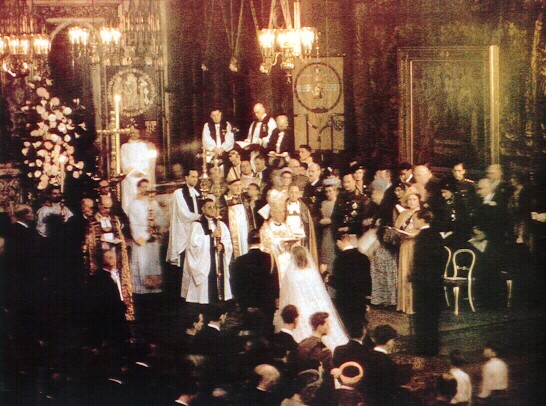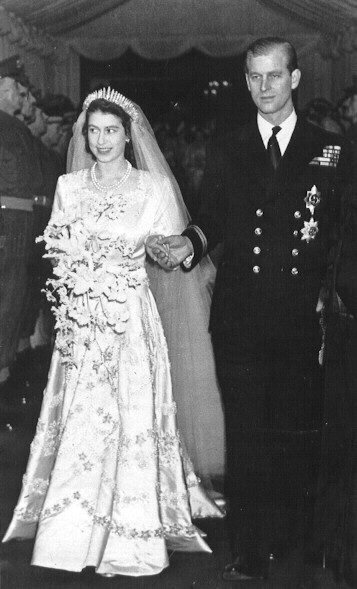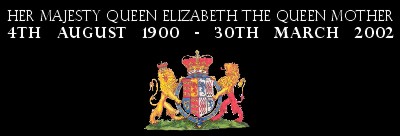

The years that followed the war weren’t easy for Britain, nor for Europe. In 1947, the Sovereigns undertook a major visit with their children to South Africa, to seek popularity, which seemed to be failing in other countries of the Empire, for India and Pakistan and others were seeking independence. Also in 1947, the King gave permission to the marriage of his eldest daughter, Princess Elizabeth, the Heiress Presumptive, to HRH Prince Philip of Greece and Denmark, a Royal Navy Lieutenant. Prince Philip’s close family relationship with some German Princely Families made the Royal Household and the Government decide that it was better for him to apply for British nationality and so he did: Philip dropped his title of Royal Highness and Greek title and became simply Philip Mountbatten, his mother’s family name in Britain. In fact, the mentor of this relationship is said have been Philip’s uncle, the Earl Mountbatten of Burma, the last Vice-Roy of India.
The King did not want to be called merciless spender while his part of his people were still starving, due to the post-war austerity. So it was decided that although the wedding should be “a ray of light” in the grey days, as Churchill (then opposition leader) called it, the pomp should be moderated and the King should pay himself most of the expenses. For the first time, morning dresses and suits were allowed for those who did not want to attend as they should to such an occasion. Uniforms were kept as they had been for the war, the former pomp was not reinstalled for the occasion.

On 20th November the wedding took place at Westminster Abbey, being the first major gathering of the European Royalty since the War had ended. Thousands of people gathered in London to watch the processions, which left Buckingham Palace shortly before the ceremony. Queen Elizabeth drove with Princess Margaret in the Glass Coach and were followed by the King and Princess Elizabeth in the Irish State Coach. On the eve, Philip had been given the style of His Royal Highness and the title of Duke of Edinburgh. He arrived almost unnoticed at Westminster, having entered by a side door while the Queen and Princess Margaret were entering through the Great West Door.
The ceremony was judged too sacred for the cameras to be allowed in, and so, although the radio broadcasted it live for the whole world, the television cameras were only allowed to film the procession and, inside the Abbey, behind the entrance of the Quire. Princess Elizabeth wore a magnificent dress by Norman Hartnell, crowded with pearls and crystals, which shone as much as the diamond tiara the Princess wore, which belonged to the Queen. After the ceremony, conducted by the Archbishop of Canterbury, the Duke and Duchess of Edinburgh drove in the Glass Coach to Buckingham Palace, where they appeared with the rest of the Royal Family, in a day that marked post-war history, and ailed a new era.


Return




